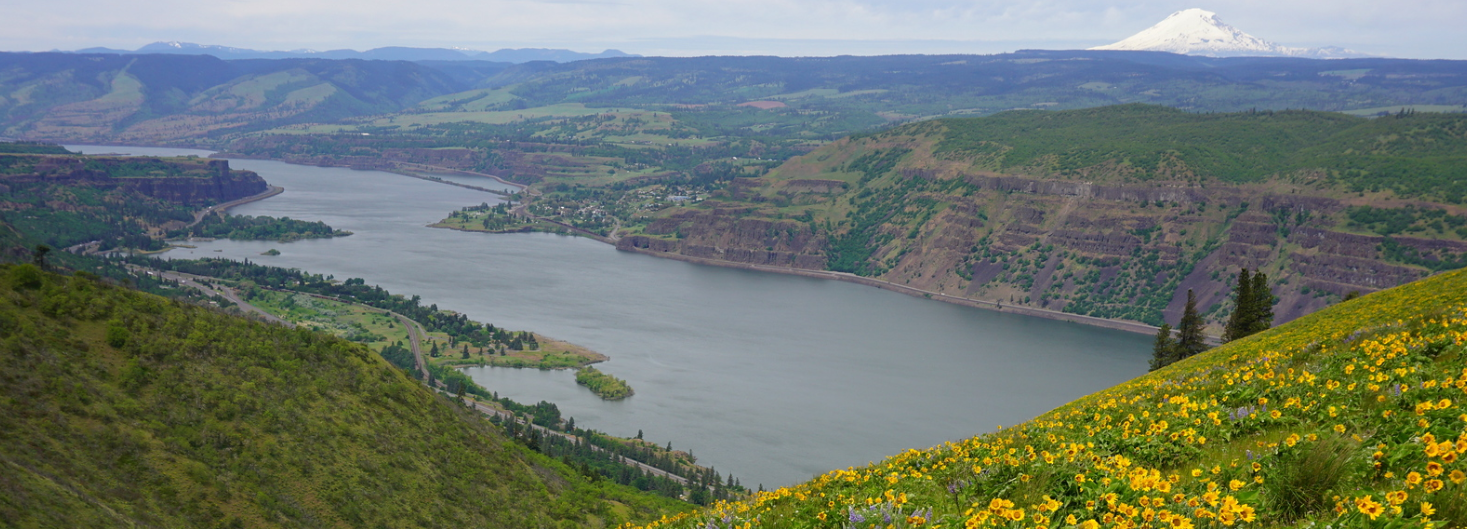In 2011, Friends of the Columbia Gorge launched the biggest recreation initiative in its history, Gorge Towns to Trails, with the ambition of creating a 200-mile loop trail network connecting communities with recreation, promoting alternative transportation options, and creating contiguous parcels of protected lands that benefit wildlife. It also would serve as an innovative tool to disperse congestion at popular trailheads and introduce people to spectacular but less visited areas of the Gorge.
The Gorge Towns to Trails concept stems from the National Scenic Area Management Plan established in 1986, including the goal to establish a loop trail that links Gorge communities. Over the last 37 years, more than 40,000 acres of public lands have been acquired in the Gorge by a multitude of entities, providing an opportunity to establish contiguous public lands; protect native plants, wildlife, and scenic views; and piece together a corridor for a connected trail system. In addition, Friends’ Land Trust has acquired more than 1,600 acres since 2009—including properties adjacent to the towns of Lyle, Washington, and Mosier and The Dalles in Oregon—creating two hiking trails open to the public.
On the horizon
Since 2011, Friends has opened two new popular hiking trails in the Gorge. One connects Mosier, Oregon, to Friends’ Mosier Plateau Preserve, while across the river above Lyle, the other expands on the existing Lyle Cherry Orchard Trail to include two new loops for hikers to explore the eastern Gorge. This process took over seven years of planning, permitting, and community engagement, to develop trails that not only honor Indigenous peoples, the land, vegetation, and wildlife, but that also provide safe, sustainable recreation opportunities that will last for generations through ongoing stewardship.
Over the past five years, Friends has been working with the City of The Dalles, The Columbia Gorge Discovery Center and Museum, Wasco County, and other local stakeholders to create an exciting new trail connection on the Mount Ulka Preserve, to connect to The Dalles Riverfront Trail and the museum. This proposal is nearing the final phases of county approval to begin building the newest trail in the Gorge, another vital link in the vision for Gorge Towns to Trails.
Additionally, Friends is working with the U.S. Forest Service to finalize a feasibility study to analyze the public lands between Mosier and The Dalles as a potential corridor for a recreation trail system. With over 95 percent of the public lands in place to host trail access, the time is right to engage residents and stakeholders to identify the obstacles and opportunities, address existing safety and congestion issues, and envision not just a trail but a sustainable, well-planned path to the future.
Seeing the need
Passing through the Memaloose Hills area just east of Mosier, it’s not uncommon to encounter cars parked for a mile down the Historic Columbia River Highway in each direction, with vehicles over the fog line and hikers all over the roadway. No one would guess, from the number of cars and pedestrians in this area, that the Memaloose Hills trails were not planned and are not currently managed by the U.S. Forest Service. In reality, this area became a draw because the beauty of the springtime wildflower show attracts so many people year after year that a meandering, inefficient, and occasionally unsafe trail gradually emerged, with no parking or services.
Memaloose Hills isn’t the only place where unplanned footpaths and unmanaged trailheads are impacting safety, vegetation, and ecological conditions. It’s happening all over the Gorge, and the problems these situations raise are all too easy to see and understand, from traffic to trash. Good trails are carefully planned and well-managed systems that account for sensitive species, cultural resources, and scenic viewsheds. With the ever-growing demand for access onto public lands, it is vitally important now to identify where new trails could be hosted, creating sustainable connections as part of a master plan for generations to come.
Moving forward together
Before joining Friends’ staff in 2007 to work on the Cape Horn Trail project, and later, on Gorge Towns to Trails, I had never given much thought to what it took to create a trail. I mistakenly assumed it was a quick and simple process, and that our public agencies had all the time and money they needed to build and maintain the outdoor recreation opportunities that we typically take for granted.
I’ve since learned through hard work and experience that quality trails don’t just happen overnight; they take decades of planning, public engagement, and hard work in the field, with a lifetime of care and stewarding to follow. That’s the promise of Gorge Towns to Trails. A great trail is a piece of living art, and these unique, complex, and beautiful creations would not be possible without the vision, effort, and accomplishments of our team at Friends; the passion and commitment from our myriad partners in business, government, and community; and the tremendous support of our members.


